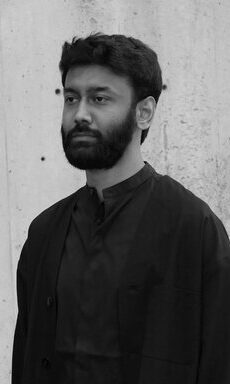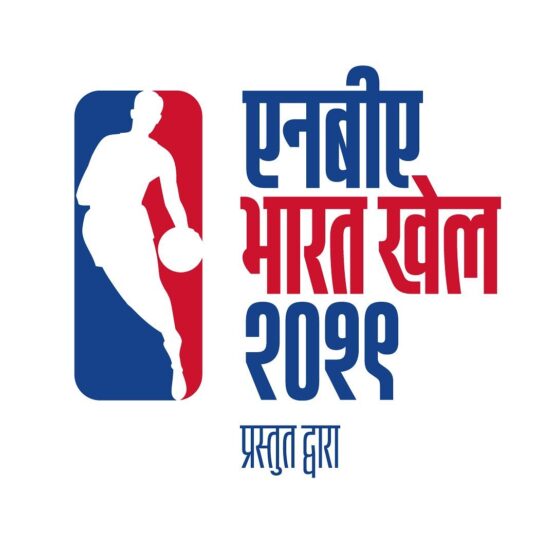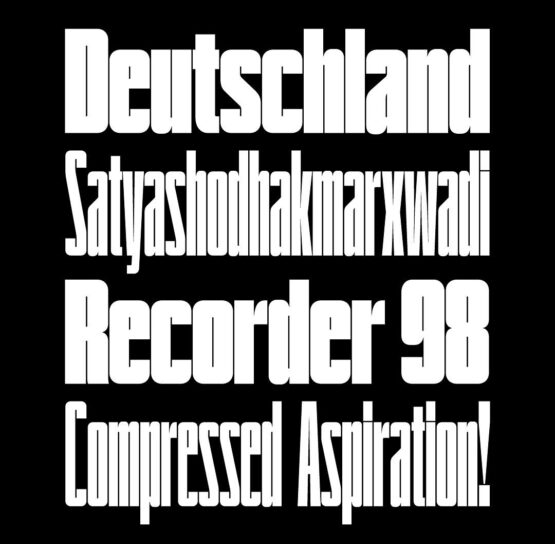Shiva Nallaperumal
The award-winning artist whose designs embrace India’s cultural plurality and yet resonate with global sensibilities
Mumbai-based Graphic Designer and co-founder of plural design studio November, Shiva Nallaperumal is well-known for his typographic practice that navigates the constraints of letterforms adeptly and creatively. Each letter is meticulously explored, yet they retain semantic meaning and functionality. The first graphic designer to be included in Forbes 30 under 30 in 2017, Nallaperumal’s designs have gathered prominence for embracing India’s cultural plurality and crafting identities that resonate with its audience. While the multifaceted artist wears several accolades, including being the youngest Indian recipient of the SOTA (The Society of Typographic Aficionados) Catalyst Award, Nallaperumal’s designs continue to remain inventive with every consecutive work. Shiva’s evolution as a graphic designer is nothing short of extraordinary- inseminated during childhood with a keen interest in movies and comics to working with the best type designers in the country and renowned entities such as Pentagram (NYC), Commercial Type, Typotheque, Grilli type. Through November, Nallaperumal along with his partner and co-founder Juhi Vishnani has created Identity Systems, printed matter, typefaces, exhibitions and campaigns for a wide variety of clients around the world - one of its noteworthy achievements being NBA’s branding in localized Indian languages. One of India’s groundbreaking artists, Shiva views design as a means to communicate and create experiences - its limitless potential shaped by personal tastes like music, reading habits, and cultural influences, resulting in unique design outcomes rather than uniform solutions to problems.



Shiva speaks to Blur The Border :
Blur : Do you have a definitive process while creating? Are there any habits or rituals that help you get into a creative mindset?
Shiva : My process differs per project but essentially it is research-driven. Because we are graphic designers and work with clients (as opposed to for ourselves), we spend a lot of time understanding the client's contexts: the industry, the cultural relevance/connotations of their work, the history of design within their context and so on. Theory is very important for us: that there is a conceptual foundation on which form-making happens. In terms of rituals, I can't work without music. This is not some unique thing, of course — I listen to specific types of music for specific projects depending on the vibe. Sometimes it is 80's Illaiyaraaja, sometimes Brian Eno's Music for Airports, and other times early Metallica.
Blur : What role does the environment play in your work or fuelling your creativity?
Shiva : It plays a huge role. I'm someone who doesn't enjoy solitude for long periods of time: I need to be in a buzzing, busy place to feel inspired. This is the main reason for why we moved to Bombay to set up November. I need to go to gigs, watch films in the theatre, explore interesting restaurants — these experiences of living fuel the work. Graphic design is a language of the now: it cannot be done without connecting with people and culture, in its moving, flowing state.
Blur : How has your artistic style evolved over the years and how do you view this evolution?
Shiva : There are two aspects to my work: Graphic Design and Typeface Design. In Type design the evolution is linear: it is a craft and you only get better and better the more you do it. It is very technical: I can look back at my old fonts and see technical mistakes or missed opportunities. You get better at drawing, spacing, seeing etc. Graphic Design isn't so linear as it isn't very dependent on specific skill sets, rather a maturing of your way of looking at the world. In graphics I think I can see a maturity develop in my attitude towards communication, research, culture etc — very intangible things that I hope keep developing. I'm getting better at understanding how to create something for the moment and something that has the potential to transcend trends and time: and I think the evolution has been that we can now make a choice between the two for specific projects — for example, if we're designing a festival, we'd want it to speak to the moment. If we're working on a legacy brand, we'd want it to be timeless. What are the graphic choices we make that achieve one over the other? The new challenge, that I wasn't very conscious of when I was younger, is being aware of my own relevance: am I relevant? Will I be relevant in the years to come? What makes someone's style feel old or dated? existential stuff.
Blur : How do you balance the need to be creative with the practical aspects of being a professional artist?
Shiva : I don't see a dichotomy here. I've always held disdain for the whole "this is my bread-butter work but I do this for my soul" — what's the point of life if you're doing something you hate 50% of the time? We've tried hard to work on projects where we didn't have to make that distinction. Whether we're working on a large corporate commission or a small radical publisher, the challenges and pleasures are the same. We place a lot of importance in working with clients who are as driven and value risk as we do: we've been lucky to work with clients who want to do in their industry what we want to do in ours: shake things up.
Blur : If you were to collaborate with other artists, outside of your discipline, what is one collaboration you would love to do?
Shiva : Being a creative director I've had the privilege to work with a wide variety of artists from different disciplines: photographers, stylists, writers, animators, film makers, musicians and architects. If I have to single out one possible collaboration, I'd love to work with a fashion designer in creating pieces for a larger project. I've always been fascinated with clothes and people who make them.